Chinese Lantern Festival 2025
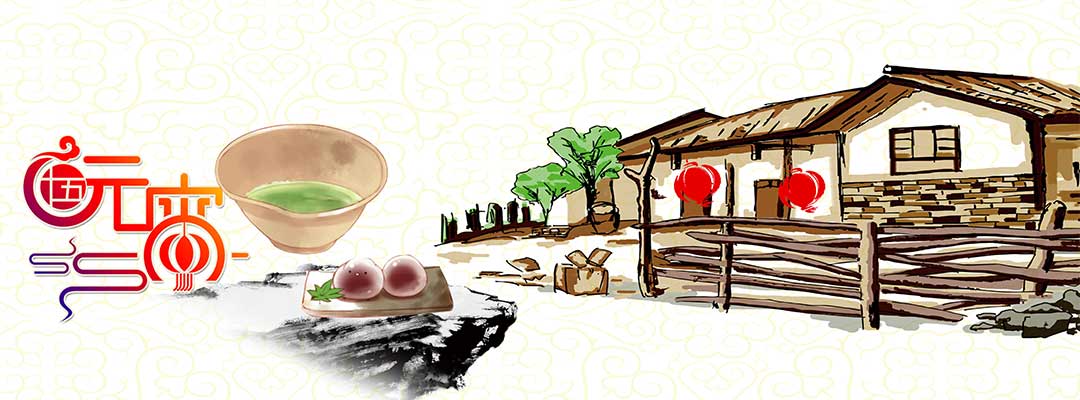
The 15th day of the first month on the lunar calendar, the first night of the year’s full moon, has long been celebrated as the Lantern Festival. It is the first vital carnival after Chinese New Year, and is also called Yuanxiao Festival (元宵节 yuán xiāo jiē), Shangyuan Jie (上元节 shàng yuán jié). Customs vary widely across China, among them the eating of glutinous rice balls (Tangyuan or Yuanxiao), the admiring of flower lanterns, and dragon and lion dances which are the essentials during the festival.
Content Preview
The Lantern Festival dates over next few years:
| Year | Date | Weekday |
|---|---|---|
| 2025 | February 12 | Wednesday |
| 2026 | March 3 | Tuesday |
| 2027 | February 20 | Saturday |
| 2028 | February 9 | Wednesday |
| 2029 | February 27 | Tuesday |
| 2030 | February 17 | Sunday |
Origin and Development of Chinese Lantern Festival

The Chinese Lantern Festival started in the Western Han Dynasty (202 BC - AD 8). At first, it was a celebration of Han culture. Watching flower lanterns began in the Eastern Han Dynasty (AD 25-220). Emperor Ming, who believed in Buddhism, ordered lanterns to be lit in the palace and temples on the 15th day of the first lunar month to honor Buddha.
In the Sui Dynasty, Emperor Yang ordered a grand Lantern Festival, which became a key cultural event and spread its traditions empire-wide due to imperial backing. A four-kilometer street from the palace gates was readied for the grand Lantern Festival. Decorated vibrantly, it became a stage for the crowds to enjoy the festive joy. There were more than 20 thousand performers and 18 thousand music players; the street was bustling with a crowd of the audience throughout the night.
During the Song Dynasty (AD960 - 1279), along with the annual carnival, officers also sent red envelopes, and all the dignitaries and ordinary people enjoyed the night of the festival. Some people created lanterns with a horror theme; the judiciary at that time made laws universally understood through the picture stories on the lanterns and by demonstrating punishments. The festival became a notable five-day carnival with a special drink. The imperial court promoted public involvement, making it a very joyous and inclusive event. As well as this, there was an upsurge of guessing lantern riddles. The riddles were pasted on the colorful lanterns, and people would win a gift if they guessed the right answer.
During the Yuan Dynasty (AD1271-1368), most of the traditional festivals were canceled because the ruler was Mongolian, not Han. The Lantern Festival hence became not so important.
However, the festival during the Ming Dynasty (AD1368-1644) was extended to 10 days, which was the longest Lantern Festival in history.
The festival was not held in the palace in the Qing Dynasty (AD1644-1912), but in the folklore, it was still impressive, as every household hung a colorful lantern on the door.
The Legend of the Chinese Lantern Festival
Once, people fought wild beasts for survival and hunted them for self-protection. One day, a celestial crane came into the mortal world, and it was killed by mistake. The Jade Emperor was furious about its death. He immediately ordered a troop to incinerate all humans and animals on the 15th day of the first lunar month. But one of his daughters didn’t want the innocent to suffer because of this, so she secretly came to the mortal world and warned people. As a result, every family set off firecrackers and fireworks and hung red lanterns outside for 3 days. In this way, people tricked the Jade Emperor and avoided a terrible disaster.
Although the legend is extremely dramatic, it is certain that the origin of the festival is related to the way of celebration. The festival is celebrated at nighttime; therefore, fire plays a critical role. After Buddhism was introduced to China, the Lantern Festival gained even more significance.
How Do Chinese Celebrate Lantern Festival
Today’s Lantern Festival is a perfect combination of tradition and modernity. It is time to eat Tangyuan, admire lanterns, guess lantern riddles and watch art performances. Lantern festival in many cities attracts a great number of visitors. Some people happily walk around with a bright small lantern in hand, making the atmosphere especially festive.
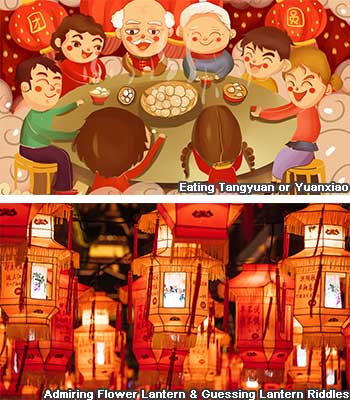
Eating Tangyuan or Yuanxiao: a symbol of reunion and harmony
Tangyuan and Yuanxiao are both soft glutinous rice balls. Tangyuan is very popular in southern China, but in Northern China people like to eat Yuanxiao. These are typical foods symbolizing family reunion and happiness. Read more about the difference between Tangyuan and Yuanxiao.
Admiring Flower Lantern
Delicately crafted lanterns are set up along the street, various shaped lanterns are painted with calligraphy, landscapes, flowers, and birds. The dazzling lantern display is a magnet for countless visitors.
Guessing Lantern Riddles: An Ancient Puzzle Game
The tradition of lantern riddle guessing, which started in the Song Dynasty, is nicknamed "tiger lanterns" as solving the riddles is as difficult as slaying a tiger. Riddles have different forms, such as puzzles which are word tricks, and puzzles requiring a knowledge of history and classical literature. This activity keeps everyone thinking and adds to the holiday cheer.
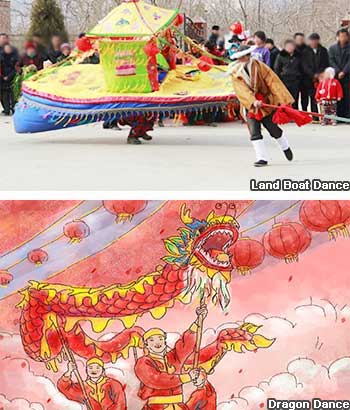
Land Boat Dance
The Land boat dance is one of the folk art performances, which imitates sailing boats on the water. The boats are decorated with red silk and colorful lanterns. Normally, one dancer raises a decorated boat around their waist, but sometimes there are four to seven dancers in a big, long boat.
Dragon Dance
The Dragon symbolizes luck and prosperity in Chinese culture. The Dragon dance is one of the activities with Chinese national characteristics. It evolved from dragon totem worship, dragon lantern dances, and the tradition of enjoying lantern displays. Exquisitely vivid dragon lanterns are crafted from thin bamboo or iron strips, silk fabrics, and lamps. Performers showcase deft and rhythmic movements while moving with quick trots. Usually, the dragon dance is performed on significant traditional festivals. It is an outstanding symbol of Chinese culture.
Helpful Chinese Vocabulary for Chinese Lantern Festival
| Simplified Chinese | Traditional Chinese | Pinyin | English |
|---|---|---|---|
| 元宵节 | 元宵節 | yuán xiāo jiē | Lantern Festival |
| 上元节 | 上元節 | shàng yuán jiē | Shangyuan Festival |
| 吃汤圆 | 吃湯圓 | chī tāng yuán | Eating Tangyuan |
| 吃元宵 | 吃元宵 | chī yuán xiāo | Eating Yuanxiao |
| 灯笼 | 燈籠 | dēng lóng | Lantern |
| 猜灯谜 | 猜燈謎 | cāi dēng mí | Guessing lantern riddles |
| 团圆 | 團圓 | tuán yuán | Reunion |
Popular Lantern Festival Greetings
元宵节快乐!yuán xiāo jiē kuài lè
- Happy Lantern Festival!
元宵佳节到,祝你生活如汤圆般圆满,如灯笼般明亮!yuán xiāo jiā jiē dào ,zhù nǐ shēng huó rú tāng yuán bān yuán mǎn ,rú dēng lóng bān míng liàng
- May your life be as fulfilling as tangyuan, and as bright as lanterns.
甜甜蜜蜜吃汤圆,事事如意好事连;祝您元宵合家幸福美满!tián tián mì mì chī tāng yuán ,shì shì rú yì hǎo shì lián ;zhù nín yuán xiāo hé jiā xìng fú měi mǎn
- Enjoy sweet tangyuan and may everything go well for you. Wishing you and your family a happy and fulfilling Lantern Festival!
元宵佳节,祝你生活甜蜜,事业顺利! yuán xiāo jiā jiē ,zhù nǐ shēng huó tián mì ,shì yè shùn lì
- On this Lantern Festival, I wish you a sweet and successful life, both personally and professionally.
花鼓龙灯闹元宵,祝您事业有成,财源滚滚! huā gǔ lóng dēng nào yuán xiāo ,zhù nín shì yè yǒu chéng ,cái yuán gǔn gǔn
- Amidst the flower drums and dragon lanterns of Lantern Festival, I wish you success in your career and abundant wealth.
OR
Are you eager to begin your Chinese cultural journey?
Drop us a line and we will promptly connect you with our leading China expert!
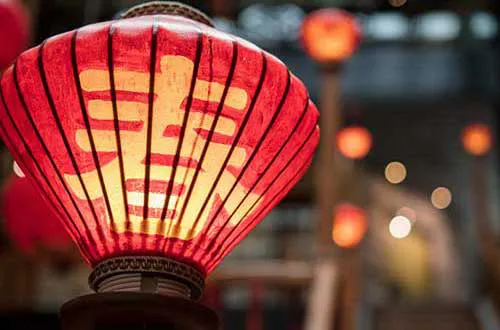 Chinese New Year
Chinese New Year 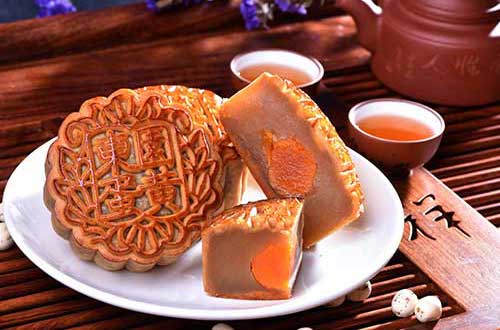 Mid-Autumn Festival
Mid-Autumn Festival 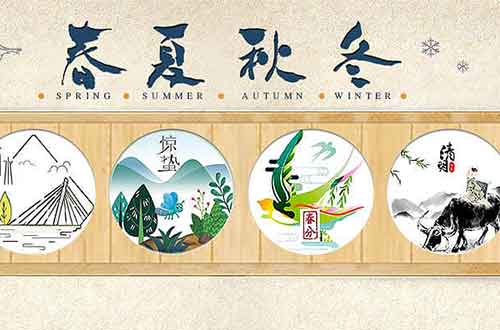 The 24 Solar Terms
The 24 Solar Terms 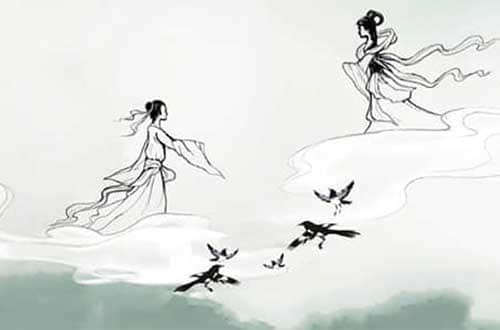 Duble Seventh Festival
Duble Seventh Festival